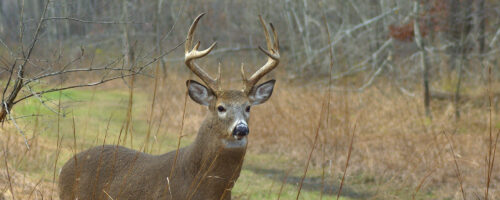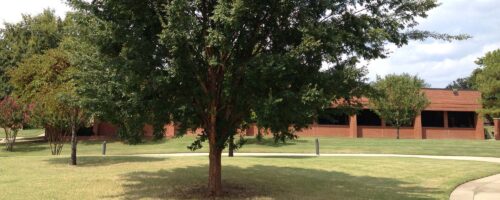Should spike bucks be culled? It depends, but in most situations with white-tailed deer, the answer is no. There are two situations where the answer can be yes: in a penned-deer situation where a manager determines breeding pairings and in a few high-fenced populations where some buck harvest may be necessary when populations have more bucks than does. If a buck must be harvested in these uncommon latter situations, a spike suffices as well as any other buck.
The vast majority (usually greater than 95 percent) of spike bucks are yearlings (1-year-old deer) and nearly all yearling spikes grow substantially larger antlers later in life. In fact, work at Mississippi State University and the Noble Research Institute Wildlife Unit has shown some spikes grow to be large-antlered trophy bucks. Very few free-ranging deer populations have overabundant white-tailed bucks. Therefore, all bucks have value in terms of maintaining relatively even adult sex ratios, short breeding seasons and good buck age structure.
The most common cause of spikes is poor nutrition. When spikes represent more than 25 percent of yearling bucks, it usually indicates too many deer are present for the available resources. Focusing on spike harvest in these situations is focusing on the wrong issue. Poor nutrition limits antler size for all buck age-classes in such situations, so more intensive doe harvest and or habitat improvement is necessary to improve nutrition for remaining deer.
Another potential cause of spikes is late-born fawns. This might be caused by very skewed adult sex ratios (too few bucks) where all does are not bred during the first estrus cycle. In this case, removing spikes simply intensifies the problem of skewed sex ratios. Late-born fawns can also be caused by fawns being bred. When deer numbers are well-matched to habitat carrying capacity and deer have plenty of resources, female fawns can develop faster and become sexually mature while still fawns. Such fawns usually breed later in the fall or winter than mature does, so these bred fawns give birth later in the summer. Their fawns get a later start in life and have less time to develop as yearling bucks than fawns from mature does. Therefore, their yearling male offspring may tend to have spikes rather than forked antlers. Spikes from fawn mothers are less common than spikes caused by poor nutrition. Nevertheless, later in life spike bucks from fawn mothers may outperform their earlier-born peers.
A third cause of spikes is genetics for smaller antlers. Research with penned deer at the Kerr Wildlife Management Area in the Texas Hill Country has shown many spike bucks tend to grow smaller antlers later in life than their fork-antlered peers. Although this is true for this Texas Hill Country deer population, it may not be true for all deer populations; work at Mississippi State University obtained different results. Even though some spike yearlings will not grow antlers as large as some fork-antlered yearlings, culling bucks will not change antler characteristics of future generations in a population of free-ranging deer like it can with penned deer. Research on some South Texas ranches by Texas A&M University-Kingsville has shown relatively long-term intensive culling of smaller-antlered bucks does not improve antler characteristics of future buck generations. Thus, in most situations, spike culling is not warranted. More information about culling bucks is available in the article Culling Bucks.



Comment